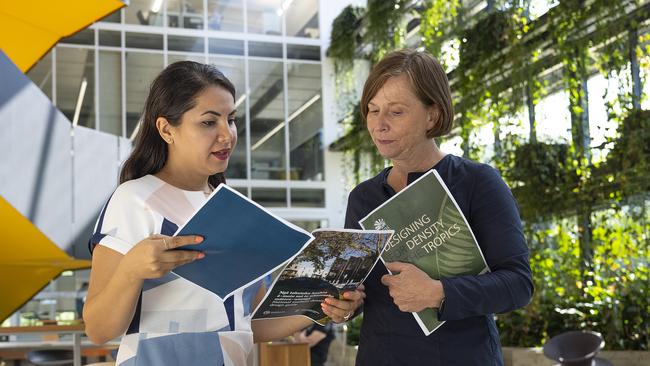Cairns population growth risks, benefits and strategies analysed
It’s the opposite of a brain drain as the Far North feels the strain of an influx of talent moving to the tropics. Experts have spoken of the benefits to the region and the pressure on housing supply.

Cairns
Don't miss out on the headlines from Cairns. Followed categories will be added to My News.
AVAILABILITY of housing in the Far North has reached tipping point with experts scratching their heads at who is taking up our homes, while debating solutions and planning strategies.
Last week, the Cairns Post revealed there was just a staggering six rental properties available in the Innisfail Greater Region, according to realestate.com.au, and that huge shortage has not eased.
Innisfail real estate agent Michael Skuse said among the buyers of the town’s homes, a high percentage were professionals from southern cities, working remotely while living in the tropics.
In the two years since the beginning of the pandemic, local real estate agents have preached that properties have been selling within hours of listing, and in record numbers to interstate buyers, with deals brokered over video calls.

And while fellow real estate agent and REIQ Cairns zone chair Tom Quaid agreed southern buyers moving north were adding to the housing squeeze, not all the experts were convinced.
That included James Cook University’s tropical urbanism and design lab professor Lisa Law who acknowledged the anecdotal data provided by agents, but said only impending census results would accurately detail movement between the states.
Knight Frank commercial sales agent and partner Greg Wood and Division 5 Cairns councillor Amy Eden also had doubts over the reported number of interstate migrants. Ms Eden stated a recent council economic report estimated there to be “not as many southerners as everyone thinks” move to the Cairns region since the beginning of the pandemic.

However, all the experts did agree availability was limited, and southerners were certainly in town, as they outlined what their presence meant for the Far North’s growth strategies, demand on services and contribution to the economy.
Mr Quaid said effects of the “southern migration” would present initial pain, for long-term gain.
“They’re working for southern companies, but for how long, eventually I can see these people using their skills to either expand our industries here themselves, or take on local jobs.
“The money they’re earning – they’re shopping here, part of local clubs, and have kids going to local schools.”

Mr Quaid said even if migrant professionals never took on local jobs, they’d paved the way for the regions’ academically ambitious youths.
“Now kids can see that they can go away for uni, learn specialist skills that they might not be able to use here, but by working remotely they can return home.
“It’s absolutely going to hurt in the short-term, but we’re far better of encouraging more of those people to come here and grow our region.”
Renowned demographer Bernard Salt agreed the population growth was “good news” for the region, but issued a warning for the local council by pointing out a similar phenomenon that occurred in the US, at New York’s Manhattan Island.

“The downside of cashed-up southerners moving up north is that they can out-compete local buyers and renters thus driving locals to other options such as caravan parks or more remote towns,” he said.
“This is what happened on Manhattan Island. The island is too expensive for low-income workers to live on so they have to travel from afar. There’s also rent control on Manhattan Island.”
Mr Salt explained rent control meant landlords were only allowed to increase the weekly amount by a certain agreed upon increment per year, for as long as the lease was signed.

“Otherwise the city grinds to a halt if you can’t get those lower income workers that provide essential services in there.
“In some respects this is the price of popularity but it also suggests that if this is a long term move, and I think it is, then the community — through the local council — needs to have bold discussion about the type of community they want for the future. Is this to be a place where wealth determines access? Or is to be a place where there’s a place for everyone.”
JCU associate professor Law and urbanism and design lab PhD researcher Rana Dadpour, who were working on a migration and liveability study, reflected on a population growth gone wrong example, closer to home.

“If anecdotal evidence is confirmed by ABS Census data, and people are coming to Cairns, we want to avoid ending up like Ipswich which is also enjoying high population growth (three per cent above national average) but there is a lack of land, planning and efficient transport that complicates housing development,” Ms Dadpour said.
“Ipswich Council is now seeking state and federal intervention.”
Professor Law stressed the importance of analysing census data and said while migration to Cairns was being identified as a major contributor to housing pressure, there was every possibility the data would reveal not as many local residents left the city either.
“Unfortunately this data will not be released until later this year. It could be that Covid migration had more complex dynamics than are being suggested through the important anecdotal evidence of real estate agents,” she said.
More Coverage
Originally published as Cairns population growth risks, benefits and strategies analysed




